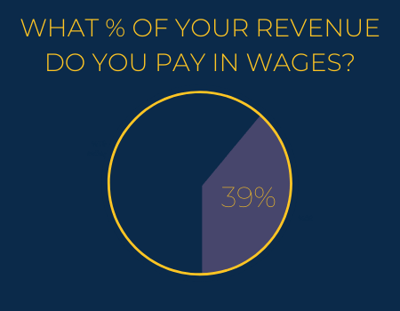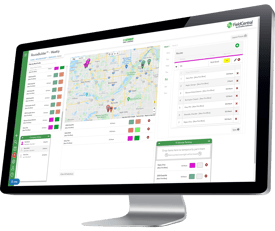
Last year our hometown Minnesota Twins baseball team hit 307 home runs, the most by any team in the long history of major league baseball. They won 101 games and made the playoffs, but got swept by the Yankees.
So this year, they decided to add more power to a team that was returning nearly everyone from that historic team. They signed Josh Donaldson, a 34 year-old masher who hit 37 home runs last year and is just 5 years removed from a season where he was the American League’s Most Valuable Player and hit 41 homers. The Twins made Donaldson their biggest free agent signing in team history, inking him to a 4 year, 92 million dollar contract.
Generally, player performance drops as they age, so by the time the contract is up and Donaldson is 38 years old, he’ll likely be highly overpaid. But this season, if his performance matches what he’s done in the past, the first couple years of the contract his performance should meet or exceed what he’s being paid.
In other words, the Twins were all in on short term success. They’re playing to win in 2020.
And then the Coronavirus shut down their season. There’s a chance there won’t be a season in 2020, which would impact the value the Twins are getting out of that Josh Donaldson contract. With other aging veterans like Nelson Cruz and Rich Hill also expected to make significant contributions, the team’s decision to invest in high-paid aging players in a gambit to win a World Series now looks questionable at best.
Why am I telling you this story? Because we can all relate. For me, the survey that the Green Industry Benchmark Report is based on was completed by over 350 green industry professionals in January and early February. The outlook for 2020 economically has changed drastically since then. For green industry businesses,the economic outlook was rosy, with 37% expecting revenue growth in excess of 10% in 2020 and 37% of respondents expecting the economy to improve in 2020, up 6% from the previous year.
Those numbers are basically worthless now thanks to many states now shutting down large parts of their economies.
Though the economic and revenue growth expectations have quickly become outdated, there are still a number of lessons to be learned from the 2020 Green Industry Benchmark Report. Here are 10 of the best:
1. Training Matters
To put it lightly, war is chaotic. That’s why the military has a rigid basic training program that is designed to resocialize recruits so they can prepare for the military. That resocialization basically mentally and emotionally retrains military members so they can operate in a new environment, including changing their attitudes and behaviors. The goal is to ensure recruits will obey orders without hesitation while also teaching basic military skills.
Once recruit training has been completed, military personnel will likely undergo more specialized training pertaining to their specific role or military career, including how to use more specialized training.
After completing specialized training, they’ll likely receive ongoing training that keeps them prepared based on changing scenarios in their career.
In essence, military training is not only for new recruits, but also for long-time military members.The training not only trains people on skills, but also the behaviors they’ll need to be successful in the military.
My impression is most green industry businesses aren’t doing both of those things. Nor is there a commitment to continual employee training and improvement, a hallmark of great businesses.
And that training matters. Among businesses that grew, about 15% offered no training. Among those who saw their revenue decrease, that number is nearly twice as much - about 28%. So the takeaway - those who train are more likely to see revenue increases than those who don’t.
What kind of training should you do?
1. Onboarding- First impressions can be everything so it’s vital to do a great job onboarding your new employees when they start. It’s even more important in the green industry, where the Benchmark Report found that 88% of respondents found it somewhat or very difficult to find good employees.
Your onboarding program should be a structured plan to get your employee up to speed and contributing to your business as quickly as possible. Plus, you want to acclimate them to the way your business operates, what your values are and what your expectations are for their work.
If you don’t have a plan, I’d start with your existing employees and map out the skills you’ll want to teach the new employee. If they’re an irrigation technician, what kind of jobs will you schedule for them initially? If they’re a lawn care worker, what equipment will they need training on to operate? What on-site expectations are there? Do they interact with customers? Do they need training on how to do that? Do you use software? How do you train them to use that software?
Essentially, I’d walk through a typical day and think about all the things that a new employee will do, and then put together a structured plan that will train them on every aspect of their job. Next, you want to think about how to make your new employee feel as if they’re a part of your team.
2. Weekly - Training shouldn’t just be for new employees, though. You want every employee to learn and grow throughout the year. How do you do that? Well, a number of our customers are using customer satisfaction surveys sent to customers after every visit through our email add-on ConnectPro. If there is any negative feedback, they work with the customer to better understand the issue and then see if there’s an opportunity to train their team at their weekly training session. That session generally lasts about 15-30 minutes and goes over that past week’s issues.
Another great tactic to ensure your employees all know your standard procedures is to have them deliver training during a weekly meeting. So a typical session would start with a recap of the previous week, followed by any training that arises from your customer survey/feedback process. Then, each week have one employee train on a topic that was assigned the previous week. If people have to train other people on something, they’re much more likely to feel social pressure to do it well and really understand the topic.
Whatever structure you choose, have weekly, bi-weekly or monthly training sessions to help improve your existing employees and it will likely result in a more profitable business with more growth potential.
3. Annual - If you’re in the northern climate, it’s likely that you have some downtime for your employees over the winter. If you do, plan to do some sort of event to kick off the new season. I’ve heard of businesses that do some kind of lunch event coupled with a half or full day of training to kickoff the year. That training can include goals for the year, new equipment, new services you’re selling, introducing new employees, training on specific topics, etc.
4. Site Specific - Depending on what kind of service you offer, you may or may not need to provide site-specific training to your employees. This is very common in commercial maintenance and snow businesses. If you’ve got a large parking lot or property to maintain, walking through the basics of how to maintain it with everyone involved can help alleviate issues that may arise.
2. You Need to Diversify
Most people think of Amazon as the seller of everything. That’s true, they are. But a growing percentage of their revenue actually comes from Amazon Web Services, their cloud computing platform. It accounts for nearly 10% of their revenue today and is growing faster than their business as a whole.
What Amazon realized is they had built an amazing amount of cloud computing infrastructure over the years to enable them to sell a large amount of products. What if they sold that infrastructure to other businesses that didn’t have the capital or knowledge to build it themselves?
Amazon Web Services was born and it’s now leading their growth. This also diversified their business, which insulates them from economic downturns that can’t be weathered as easily by businesses that are retail-only.
You should consider doing the same. As we found in the Green Industry Benchmark Report, your peers are diversifying. We listed 9 of the most common green industry services and found that just 7% of respondents offer only 1 of those services, down almost half from last year. Plus, the average green industry business offers 5 of those 9 services.
So how do you diversify your service offering? It’s not easy, but follow these steps to add a new service:
1. Get market input - I’d start by asking your existing customers what additional services they wish you offered. You can do that informally through phone calls or more formally through a survey. Whatever you choose, adding a service that your customers want/need will pay off faster because they’re the easiest people to sell on that new service.
2. Do a competitive analysis - Once you’ve successfully sold your new service to your existing customer base, you’ll need to compete against local businesses. So I’d do a simple competitive analysis to see what they do well, who the major players are, their price, customer satisfaction, etc. Again, a lot of this can be anecdotal. See if you can talk to people who use or have used that service provider, etc.
Social media can be a great tool for this competitive intel. Check out their reviews to see what they do well and not so well. If you use NextDoor, create a post asking for recommendations (or find existing ones) and see what people are saying. It’s very easy to find competitive intelligence online, and doing so can help you better position your product, understand who you’re selling to and ultimately lead to faster revenue growth.
3. Determine who will do the work - You could train people to do your new service or hire experienced professionals. Whatever step you choose really depends on how fast you want to grow that new service. Training existing staff means they’ll essentially be learning on the job. A new hire with experience will likely lead to more productivity in the field and higher customer satisfaction right off the bat.
4. Cross-promote your new service - If I’ve heard this from one customer, I’ve heard it from a 100: My customers don’t know what I do. We have a number of customers that were irrigation businesses that started to offer fertilization services. But their fertilization customers don’t know they offer irrigation services and their irrigation customers don’t know they offer fertilization services.
That’s likely because they aren’t doing everything they can to make their customers aware that they offer the services that they offer. So make sure every estimate, invoice, email, and even conversation promotes your new service. It takes time to make everyone aware, but the more places you put your message, the more likely it is to resonate.
3. Wages should be about 40% of your revenue.
The wages that a business pays in large part is determined by the product or service delivered by the business. Highly automated businesses - like manufacturing businesses that rely on robotic or automated processes - can have labor be as little as 5 to 10% of business revenue. Service businesses like those in the green industry can be much higher - as evidenced by the Benchmark Report that found wages average about 39% of revenue.
When we broke that down by annual revenue, there was very little change in the average percent of wages paid, though it did range from a low of just under 35% to a high of just under 45%.
So if you find your wages are significantly higher than these averages, what do you do? There are a couple options:
1. Install technology - I’m obviously partial to this approach, but our software enables you to easily track both productive and non-productive time. In fact, because of the scheduling and routing tools included in our software, you’ll likely gain productive time (and revenue) just through better scheduling, routing, time tracking and accurate parts and material tracking. And by tracking all of that information - down to the minute - you can take corrective actions if you find employees aren’t as productive as you’d like.
2. Increase labor efficiency - There’s a concept called piecemeal work that’s been espoused by a number of folks I’ve talked to that enables them to not only increase their employee productivity, but also maintain their wages as a percentage of revenue. At its core, piecemeal means you pay your employees by the job instead of by the hour. So if they take longer than the job is budget to take, they’re likely taking home less money. If they take less time, they make more money. There are pros and cons to this approach, but it’s one way that a number of green industry businesses have been able to increase productivity while also potentially improving profitability.
3. Decrease paid hours - I won’t talk much about these last two items, but one obvious way to reduce your payroll burden is to decrease the number of paid hours your employees can work. You’ll need to have your employees complete the same amount of work in those hours, however, to reduce the percentage of revenue consumed by wages.
4. Layoffs - Finally, and this may apply specifically to the economic slump we’re in - layoffs can help lessen payroll burdens. If your revenue declines - or will decline - it’s likely you won’t have any other choice other than layoffs.
As an aside - most people don’t realize this, but software can help you weather economic downturns by identifying your most productive employees. I remember talking to a customer about the tough decision he made in 2009 to layoff an employee because of the recession. He planned to keep his most tenured, 20-year employee over one of his newest employees because he thought he was his best employee. But when he compared their productivity, he found his newer employee actually got more work done. He said it was a hard decision, but with the data staring him in the face, he knew he had to layoff his most seasoned employee for the benefit (and survival) of the business as a whole.
Read the whole story. Download the 2020 Green Industry Benchmark Report








